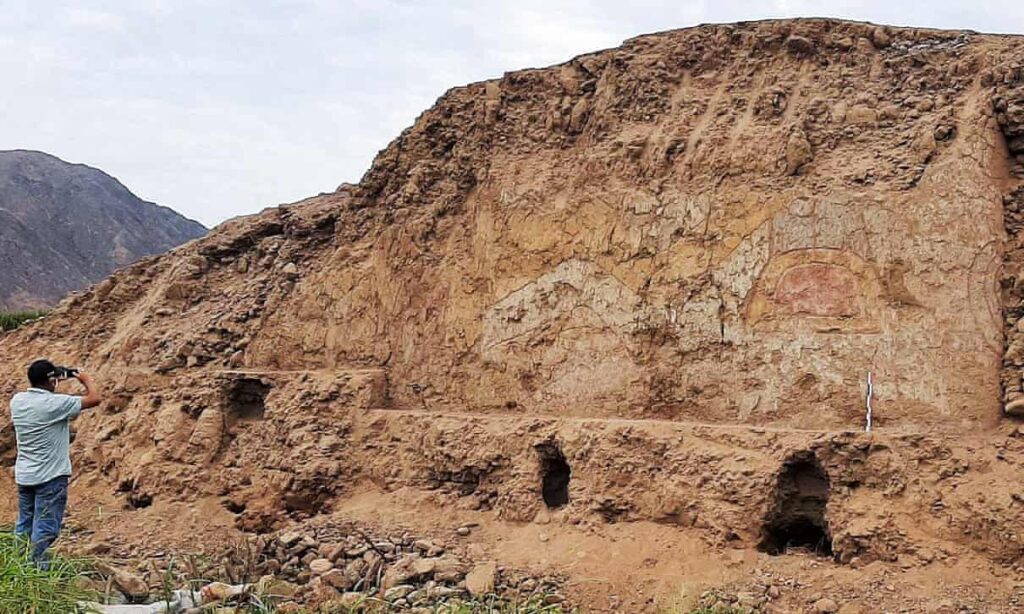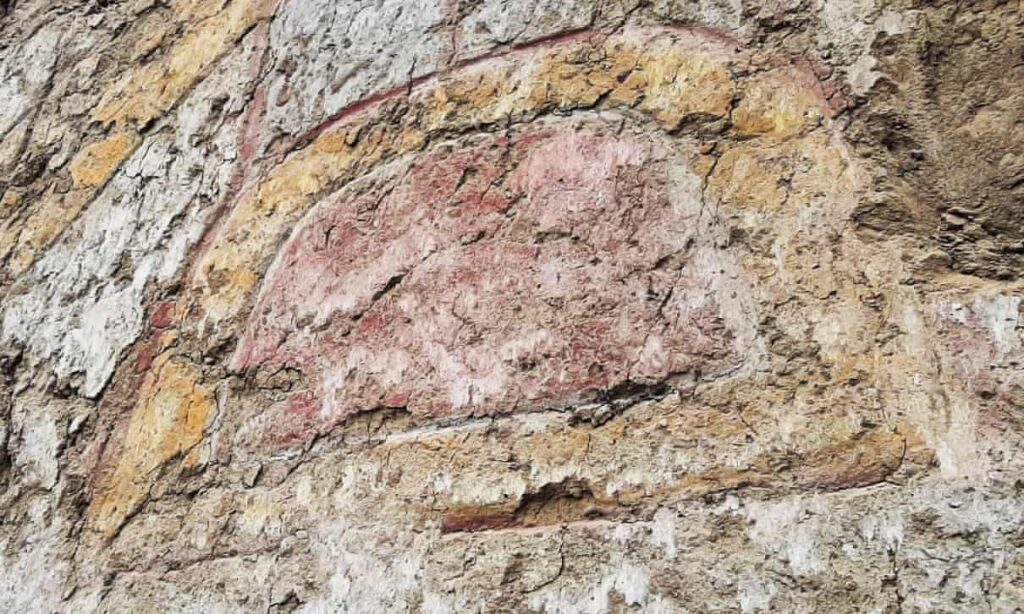3,200-Year-Old Spider Mural Identified in Peru
The Guardian reports that a 3,200-year-old mural on a mudbrick structure situated near a river in northwestern Peru depicts a knife-wielding spider god associated with rain and fertility.

The image was painted with yellow, grey, and white paint in addition to ochre.
The wall of the 15m x 5m mud-brick structure in the Virú province of Peru’s La Libertad region – was discovered last year after much of the site was destroyed by local farmers trying to extend their avocado and sugarcane plantations.
Experts believe the shrine was built by the pre-Columbian Cupisnique culture, which developed along Peru’s northern coast more than 3,000 years ago.
The archaeologist Régulo Franco Jordán said the shrine’s strategic location near the river had led researchers to believe it had been a temple dedicated to water deities.

“What we have here is a shrine that would have been a ceremonial centre thousands of years ago,” he told Peru’s La República newspaper.
“The spider on the shrine is associated with water and was an incredibly important animal in pre-Hispanic cultures, which lived according to a ceremonial calendar. It’s likely that there was a special, sacred water ceremony held between January and March when the rains came down from the higher areas.”
According to the archaeologists, about 60% of the complex, which lies 500km north of Lima, was destroyed in November last year when farmers in the region used heavy machinery to try to extend their crop fields.
Jordán has named the temple Tomabalito after the nearby archaeological site known as El Castillo de Tomabal.
“The site has been registered and the discovery will be covered up until the [Covid] pandemic is over and it can be properly investigated,” he told La República.
The spider god is not the only ancient animal artwork to have appeared in Peru over recent months.
In October last year, the form of an enormous cat, dated to between 200 BC and 100 BC, emerged during work to improve access to one of the hills that overlook the country’s famous Nazca line geoglyphs.





